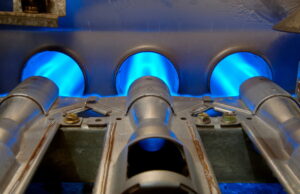
Sometimes, people feel edgy about using a natural gas furnace in their home. They might think a gas furnace is an accident waiting to happen, either causing a fire because of uncontrolled combustion or sending toxic carbon monoxide into the house. Although these problems can occur, they’re rare—especially if a furnace receives routine maintenance inspections and tune-ups each year. When we inspect a furnace during maintenance, we check carefully for any potential hazards and then fix them. For older furnaces, we may recommend a replacement.
We want you to feel safe in your home with your furnace, which is why we’ve created this post about the safety features of gas furnaces. You’ll always need annual maintenance, but these features will prevent most possible safety problems so you can enjoy the powerful warmth from your gas furnace in peace.
The limit switch
This switch is designed to shut the furnace off in the event that the heat exchanger begins to overheat. The heat exchanger is the large metal container that holds the combustion gas from the burners. The metal walls of the exchanger heat up and then transfer this heat to the air pushed through the furnace. The exchanger cools down through this process, but if it doesn’t (often because of poor airflow), the limit switch detects it and shuts the furnace off.
The flame sensor (thermocouple)
In furnaces built after 2010, a part called the flame sensor detects if the gas coming from the burners has ignited. If the burners fail to ignite, large amounts of unburned gas will flood into the combustion chamber. This creates a danger of a large explosion if the gas should later ignite. If the flame sensor doesn’t detect flames once gas is flowing to the burners, it sends an electric signal to the gas valve to shut off the gas. Older furnaces use a device called a thermocouple to handle the same job, although the thermocouple isn’t as reliable as modern flame sensors.
The flame rollout sensor
This device is designed to prevent a “rollout” of the flames to outside the furnace. This can occur in situations where there is insufficient oxygen in the fire box and the flames immediately move to the nearest source of oxygen—likely outside of the furnace where it can catch parts of the area around it on fire. The rollout sense detects this and shuts off the gas immediately to stop it.
Flue exhaust pressure sensor
At the end of a heating cycle, the cooled gas in the heat exchanger is sent out of the house through a flue so it escapes harmlessly outdoors. A device called an inducer motor is responsible for drawing the gases through the flue. The flue exhaust pressure sensor checks that the inducer motor is able to push out the exhaust gases. If there’s blockage in the flue that could cause gases to back up into the furnace, the pressure sensor shuts off the furnace. The furnace won’t be able to run again until professionals clear the blockage.
We are experts when it comes to furnaces in North Little Rock, AR and throughout the Conway area.
Dewees HVAC proudly serves the Conway area. Call us when you have any trouble with your gas furnace—we are here to keep you comfortable!
